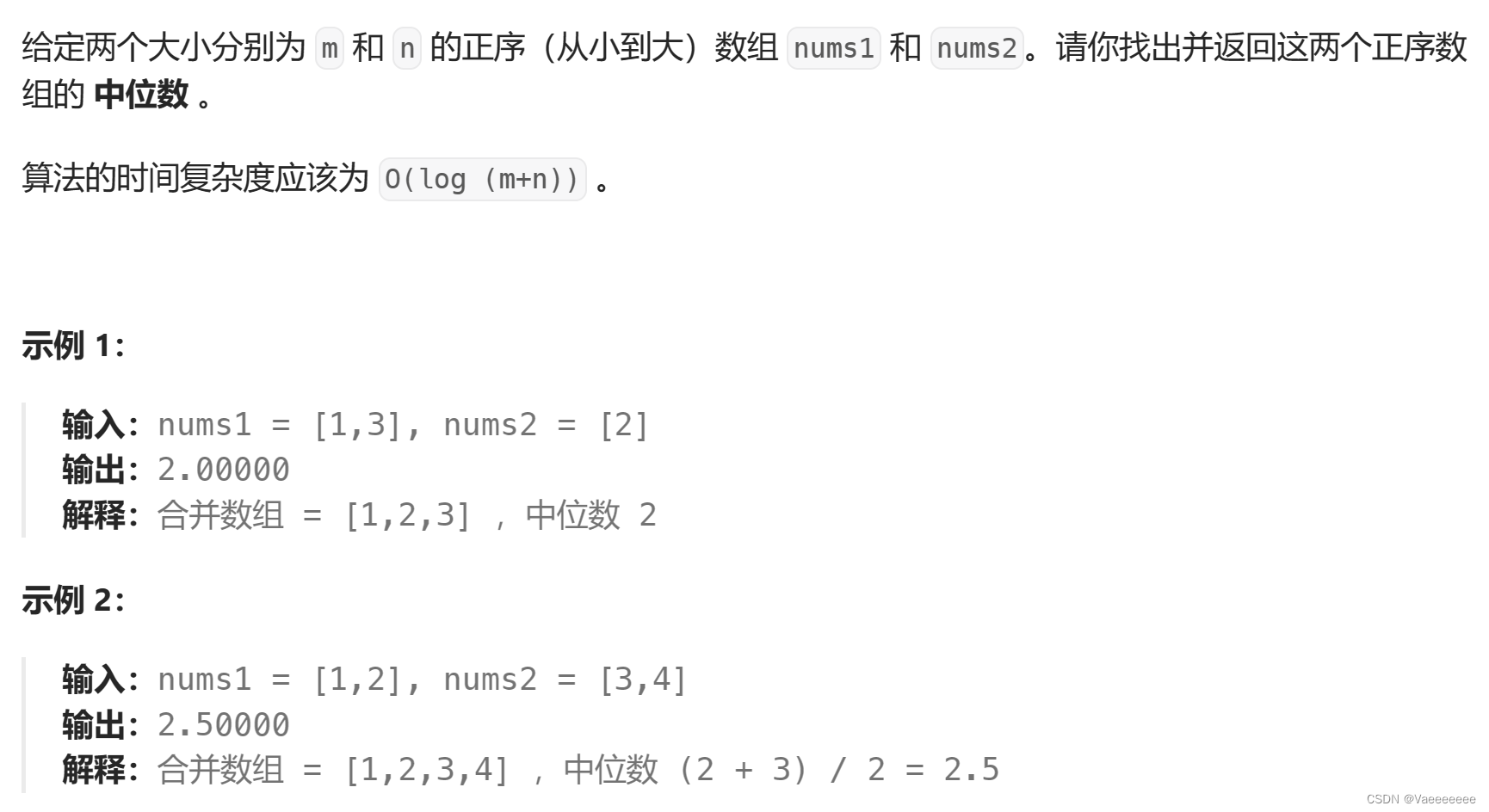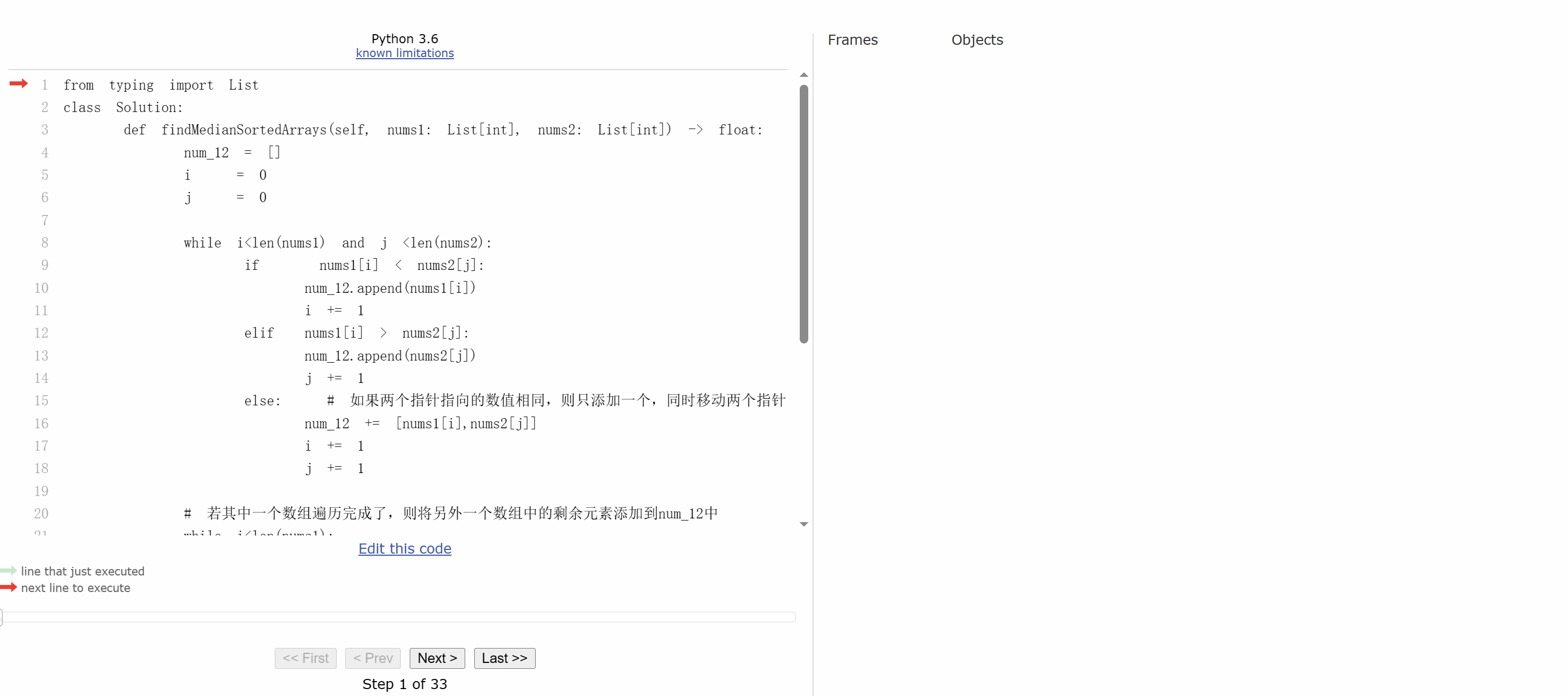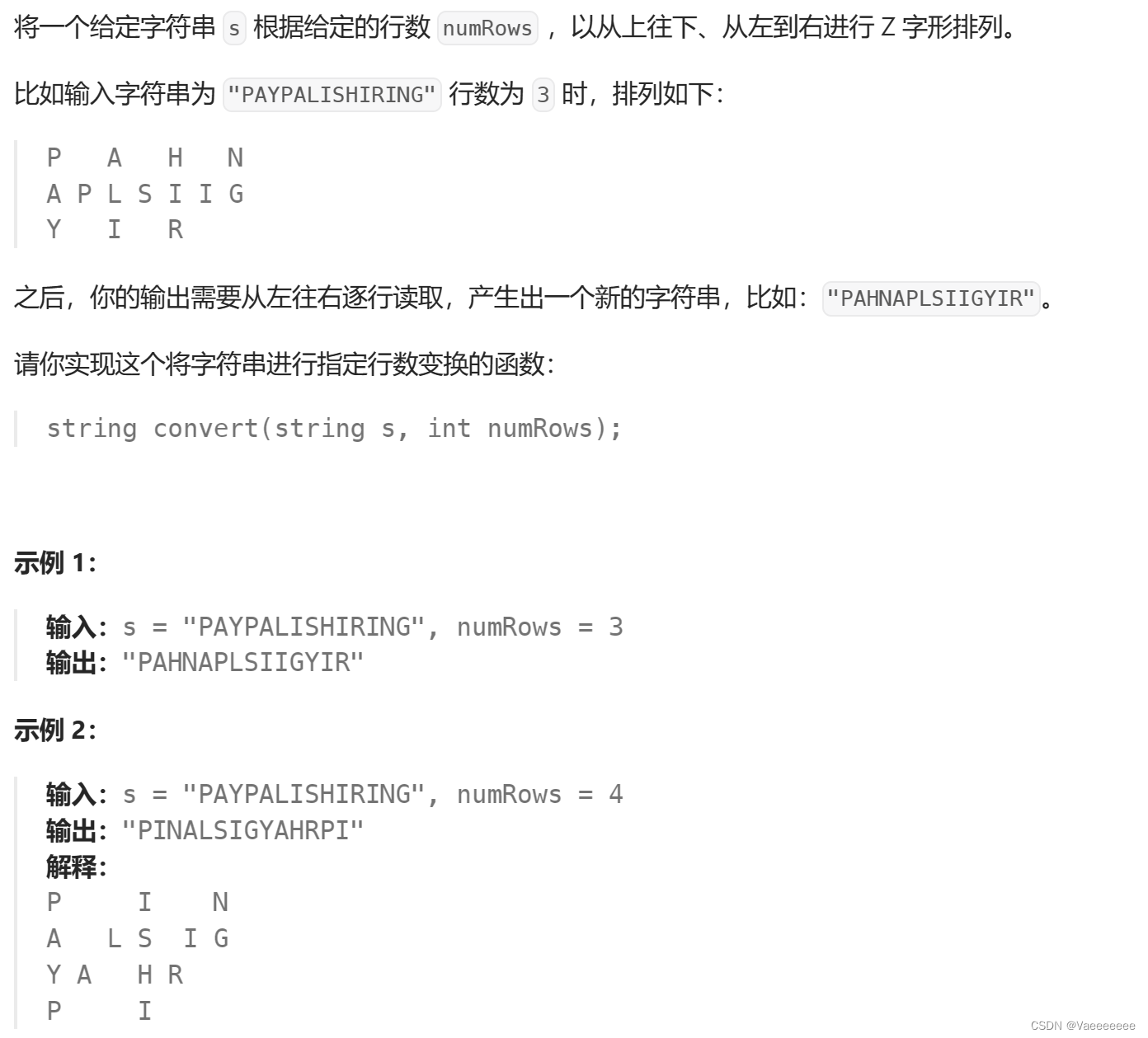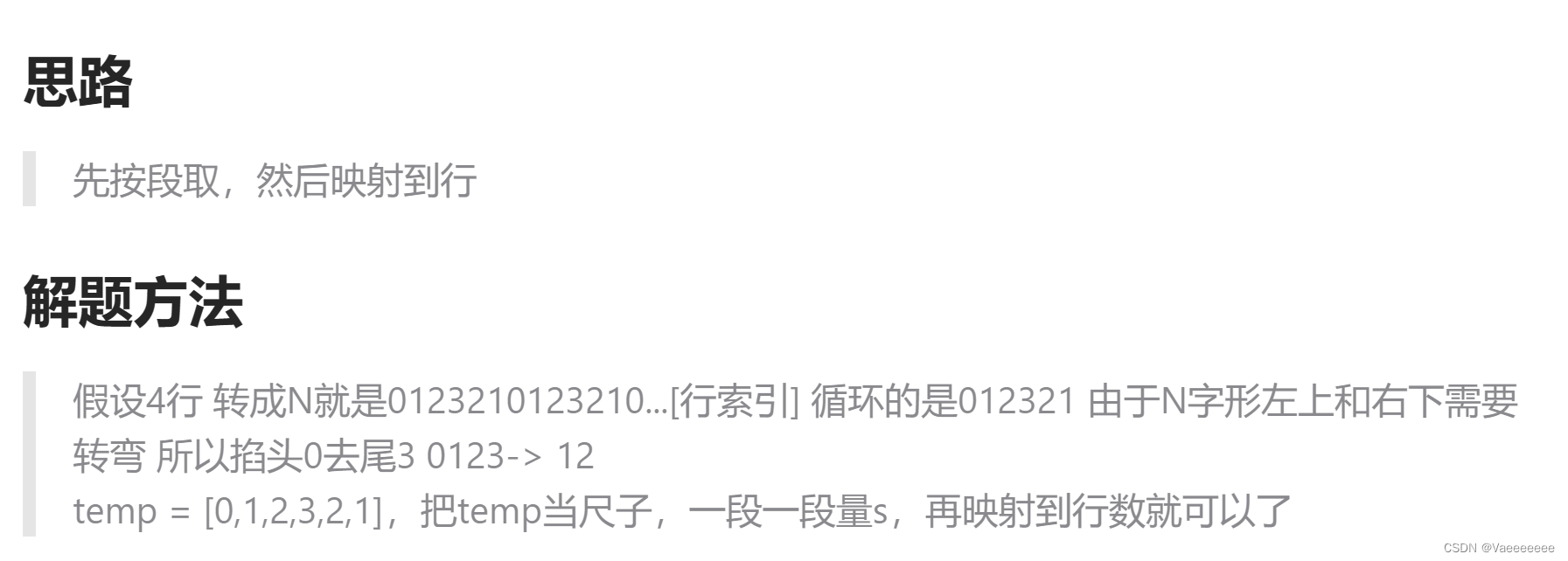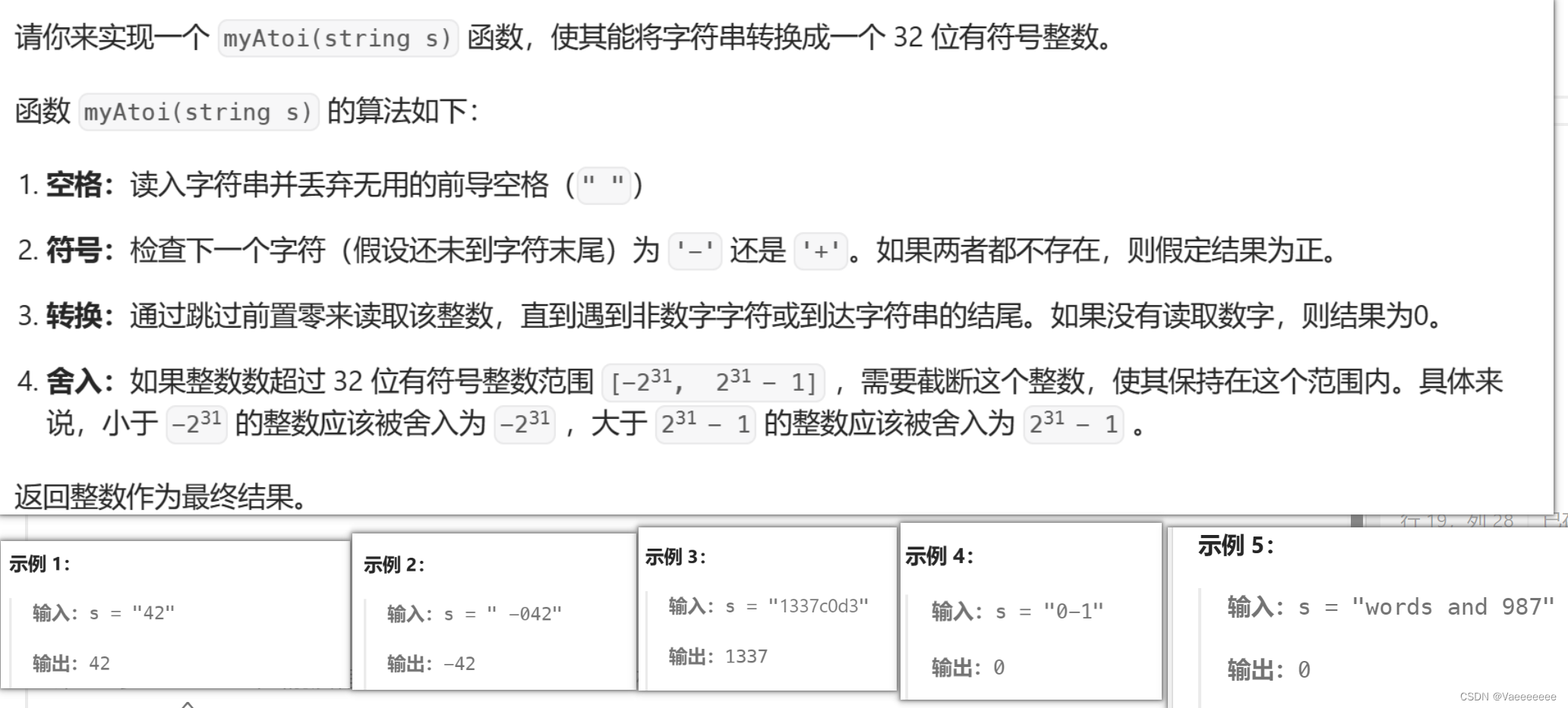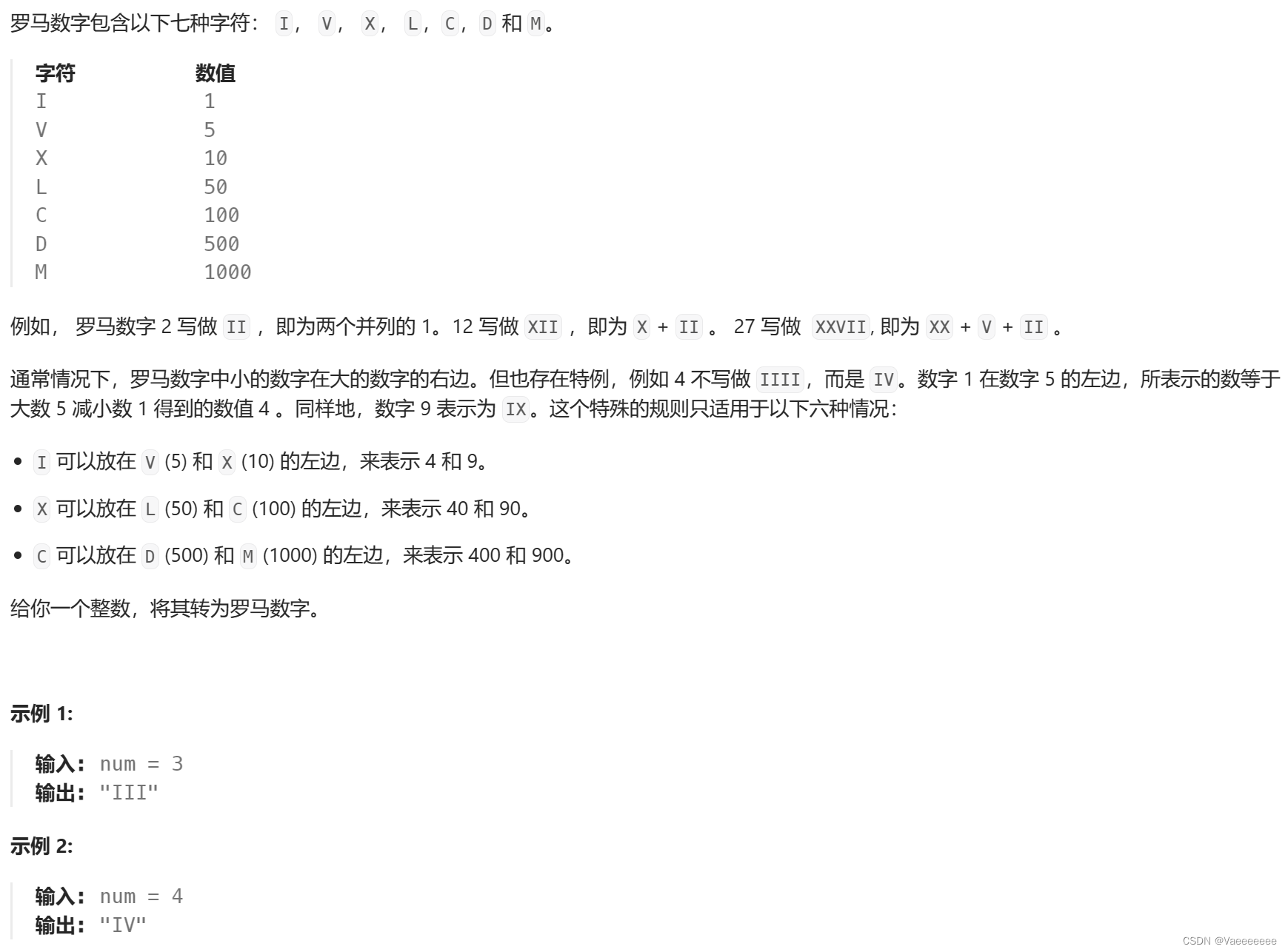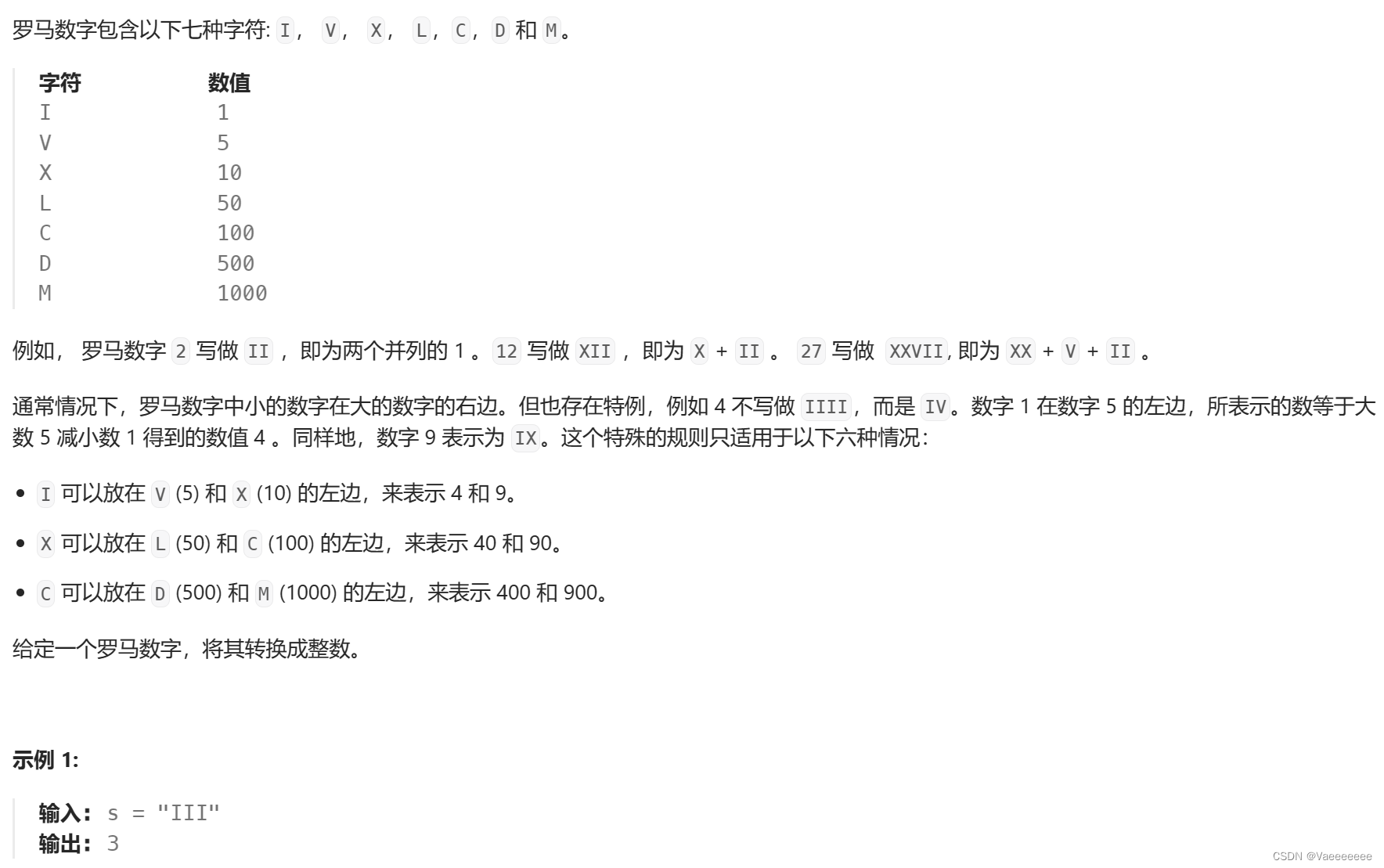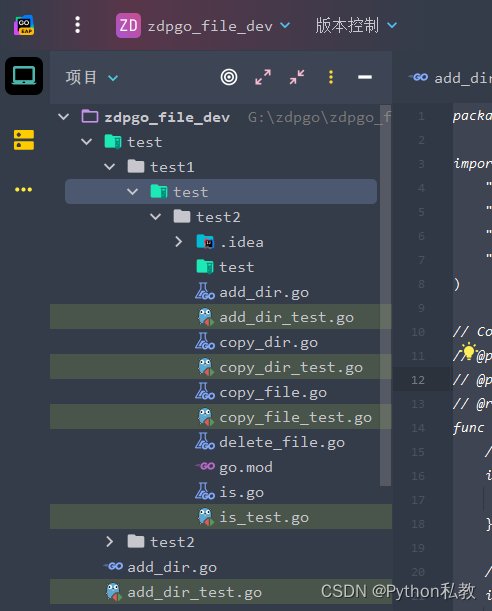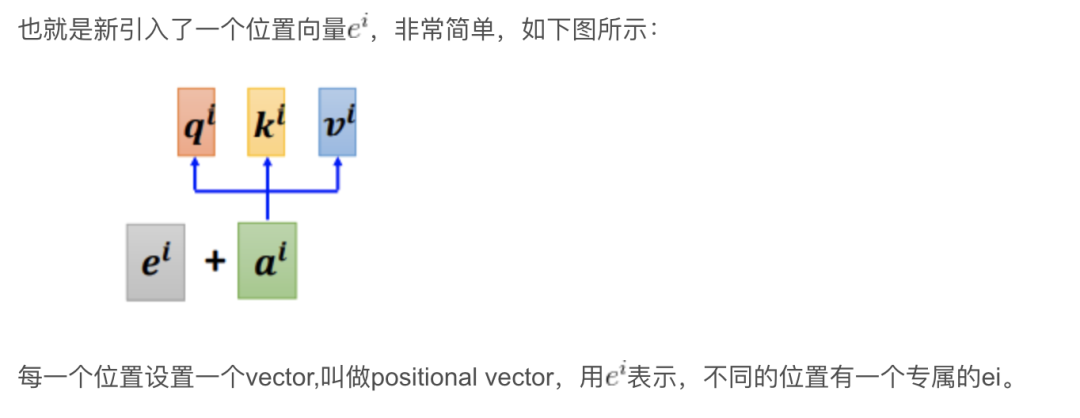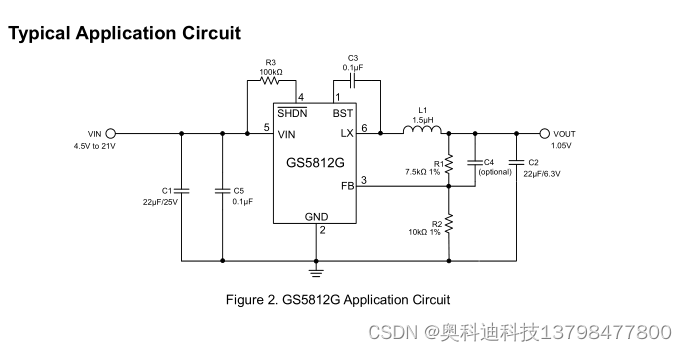文章目录
- 前言
- 寻找两个正序数组的中位数
- 1️⃣ 双指针快速排序
- 2️⃣ 第k小数解法
- Z 字形变换
- 1️⃣ 个人解法
- 2️⃣巧妙解法1
- 3️⃣巧妙解法2
- 字符串转换整数 (atoi)
- 1️⃣ 常规方法
- 2️⃣ 作弊方法😫
- 整数转罗马数字
- 1️⃣ 常规方法:按照给定规则写出判断条件即可
- 2️⃣ 循环实现
- 罗马数字转整数
- 1️⃣ 常规处理
- 2️⃣ 改进
- 总结
前言
算法小白初入leetcode。本文主要记录个人在leetcode上使用python解题的思路和过程,如果有更好、更巧妙的解题方法,欢迎大家在评论区给出代码或思路。🚀

寻找两个正序数组的中位数
- 题目描述
- 实际上就是对数组排序的问题
1️⃣ 双指针快速排序
- 定义两个指针 i i i和 j j j,初始时分别指向两个列表的开头。然后,比较指针所指的元素,将较小的元素添加到结果列表中,并将对应指针向后移动一位。重复这个过程,直到其中一个列表的所有元素都被添加到结果列表中。最后,将另一个列表中剩余的元素添加到结果列表的末尾。具体代码和执行过程可以如下所示:
class Solution:
def findMedianSortedArrays(self, nums1: List[int], nums2: List[int]) -> float:
num_12 = []
i = 0
j = 0
while i<len(nums1) and j <len(nums2):
if nums1[i] < nums2[j]:
num_12.append(nums1[i])
i += 1
elif nums1[i] > nums2[j]:
num_12.append(nums2[j])
j += 1
else: # 如果两个指针指向的数值相同,重复添加该元素,同时移动两个指针
num_12 += [nums1[i],nums2[j]]
i += 1
j += 1
# 若其中一个数组遍历完成了,则将另外一个数组中的剩余元素添加到num_12中
while i<len(nums1):
num_12.append(nums1[i])
i += 1
while j<len(nums2):
num_12.append(nums2[j])
j += 1
if len(num_12)%2 == 0:
return (num_12[len(num_12)//2] + num_12[len(num_12)//2 - 1]) / 2
else :
return num_12[len(num_12)//2]
2️⃣ 第k小数解法
- 这个解法是众多题解中非常巧妙的一个,具体原理和算法可以直接看这里:第k小数解法视频详解
- 算法实现:知道原理后,其实本质就是在不断排除比中位数还要小的那些数,直到找到中位数,所以可以利用递归的方式去实现它。
class Solution:
def findMedianSortedArrays(self, nums1: List[int], nums2: List[int]) -> float:
total_length = len(nums1) + len(nums2)
if total_length % 2 == 1:
# 如果总长度为奇数,则中位数为第 (total_length // 2 + 1) 小的元素
return self.findKthElement(nums1, nums2, total_length // 2 + 1)
else:
# 如果总长度为偶数,则中位数为第 total_length // 2 和第 total_length // 2 + 1 小的元素的平均值
left = self.findKthElement(nums1, nums2, total_length // 2)
right = self.findKthElement(nums1, nums2, total_length // 2 + 1)
return (left + right) / 2
def findKthElement(self,nums1, nums2, k):
"""
nums1: 第一个有序数组
nums2: 第二个有序数组
k : 要查找的第 k 小的元素(1-indexed)
返回值: 第 k 小的元素
"""
len1, len2 = len(nums1), len(nums2)
# 确保 nums1 是较短的数组
if len1 > len2:
return self.findKthElement(nums2, nums1, k)
# 如果较短数组为空,则直接返回 nums2 中的第 k 个元素
if len1 == 0:
return nums2[k-1]
# 如果 k == 1,则返回两个数组中第一个元素的最小值
if k == 1:
return min(nums1[0], nums2[0])
# 选择 nums1 和 nums2 中的 k//2 个元素,比较这两个元素
i = min(len1, k // 2)
j = min(len2, k // 2)
if nums1[i-1] > nums2[j-1]:
# 如果 nums1 中第 i 个元素较大,则说明 nums2 中的前 j 个元素不可能是第 k 小的元素
return self.findKthElement(nums1, nums2[j:], k - j)
else:
# 如果 nums2 中第 j 个元素较大,则说明 nums1 中的前 i 个元素不可能是第 k 小的元素
return self.findKthElement(nums1[i:], nums2, k - i)
确实是又快了一些,可惜才击败三十多,想知道更快的解法💡
Z 字形变换
- 题目描述
1️⃣ 个人解法
- 可以发现每一行的字符都与第一行的字符存在关联的,所以只要先确定第一行的元素,后面几行的元素就能确定了。如题目描述中的示例2,第二行字符
ALSIG可以认为是第一行字符PIN中每个元素在 s s s中的索引位置向左和右各移动 1 1 1次得到(超出索引位置就舍弃掉),第二行字符YAHR可以认为是第一行字符PIN中每个元素在 s s s中的索引位置向左和右各移动 2 2 2次得到(超出索引位置就舍弃掉),依次类推…
但是要注意两点:1):最后一行的字符按照这样的处理会导致出现重复,所以需要单独处理;2):如果是下面这种情况,按照这样的处理就会导致末尾RI这两个字符遗漏,所以由第一行字符中最后一个字符确定其他行字符时,需要单独处理。
class Solution:
def convert(self, s: str, numRows: int) -> str:
'''
思路:先确定第一行和最后一行的元素,后面几行的元素顺序与第一行有关
'''
if numRows == 1:
return s
line1 = ''
line1_index = []
length = len(s)
for i in range(0,length,2*(numRows-1)):
line1 += s[i]
line1_index.append(i)
for i in range(numRows-1):
next_line = ''
index = []
for j in line1_index:
if i == numRows-2: #最后一行作特殊处理
if j+numRows-1 < length:
next_line += s[j+numRows-1]
else:
if j-i-1 > 0:
next_line += s[j-i-1]
if j+i+1 < length:
next_line += s[j+i+1]
if j == line1_index[-1] and j+2*numRows-3-i < length:
next_line += s[j+2*numRows-3-i]
line1 += next_line
return line1
不过时间效率并不高,有待优化🤦♂️
2️⃣巧妙解法1
- 参考leetcode-wuji3
class Solution:
def convert(self, s: str, numRows: int) -> str:
temp = [i for i in range(numRows)]
temp += temp[1:-1][::-1]
res = [''] * numRows
n = len(s)
for i in range(n):
res[temp[i%len(temp)]] += s[i]
return ''.join(res)
思路清晰,代码简洁,确实很巧妙!
3️⃣巧妙解法2
- 使用变量 i i i 表示当前字符的行索引,初始值为 0 0 0;使用变量 f l a g flag flag 表示行索引的变化方向,初始值为 − 1 -1 −1。然后遍历原字符串中的每个字符 c c c:将当前字符 c c c 添加到 r e s [ i ] res[i] res[i] 对应的行中。如果当前行索引 i 到达首行或末行,则改变 f l a g flag flag 的方向。最后根据 f l a g flag flag 的方向更新行索引 i i i,这样一来就实现了“Z”字形的逻辑。
class Solution:
def convert(self, s: str, numRows: int) -> str:
if numRows < 2:
return s
res = ['' for i in range(numRows)]
i , flag = 0,-1
for c in s:
res[i] += c
if i == 0 or i == numRows - 1:
flag = -flag
i = i + flag
return ''.join(res)
字符串转换整数 (atoi)
- 题目描述:
1️⃣ 常规方法
- 按照题目,思路如下:
- 第一步去掉字符串前面的所有空格;
- 分类讨论,只保留符合条件的字符:
- 首字符是
-或者+的情况:从第二个字符遍历到最后一个字符,满足条件的字符留下。对于是否保留 0 0 0这个字符,可以通过最终拼接的字符串re的长度来判断,如果等于 0 0 0说明是前置零,直接舍弃,其余情况则保留。对于非数字字符的判断,可以通过 A s c a l l Ascall Ascall码来进行判断。 - 其他情况:同上处理,只不过从开头遍历到结尾。
- 首字符是
- 将最后拼接的字符串转换成整数并输出。
class Solution:
def myAtoi(self, s: str) -> int:
s = s.strip()
re = ''
if s == '':
return 0
elif s[0] == '-' or s[0] == '+':
i = 1
while i <= len(s)-1:
if ord(s[i]) < 48 or ord(s[i]) > 57:
break
if len(re) == 0 and s[i] == 0:
continue
else:
re += s[i]
i += 1
if len(re) == 0:
return 0
elif s[0] == '-':
return max(-int(re),-2**31)
else:
return min(int(re),2**31-1)
else:
i = 0
while i <= len(s)-1:
if ord(s[i]) < 48 or ord(s[i]) > 57:
break
if len(re) == 0 and s[i] == 0:
continue
else:
re += s[i]
i += 1
if len(re) == 0:
return 0
else:
return min(int(re) , 2**31-1)
2️⃣ 作弊方法😫
- 其实
Python中的内置函数int可以直接实现这个题目的大部分情况,我们直接拿来使用,然后对于使用不了的情况就用try ... except进行捕捉,然后再使用上面的常规方法。
class Solution:
def myAtoi(self, s: str) -> int:
try:
return max(int(s),-2**31) if '-' in s else min(int(s),2**31-1)
except Exception as e:
s = s.strip()
re = ''
if s == '':
return 0
elif s[0] == '-' or s[0] == '+':
i = 1
while i <= len(s)-1:
if ord(s[i]) < 48 or ord(s[i]) > 57:
break
if len(re) == 0 and s[i] == 0:
continue
else:
re += s[i]
i += 1
if len(re) == 0:
return 0
elif s[0] == '-':
return max(-int(re),-2**31)
else:
return min(int(re),2**31-1)
else:
i = 0
while i <= len(s)-1:
if ord(s[i]) < 48 or ord(s[i]) > 57:
break
if len(re) == 0 and s[i] == 0:
continue
else:
re += s[i]
i += 1
if len(re) == 0:
return 0
else:
return min(int(re) , 2**31-1)
确实提速了一些hhh
整数转罗马数字
- 题目描述
1️⃣ 常规方法:按照给定规则写出判断条件即可
class Solution:
def intToRoman(self, num: int) -> str:
char_num = {1:'I',5:'V',10:'X',50:'L',100:'C',500:'D',1000:'M',4:'IV',9:'IX',40:'XL',90:'XC',400:'CD',900:'CM'}
re = ''
while num > 0:
if 1000 <= num:
re += char_num[1000]
num -= 1000
elif 900 <= num < 1000:
re += char_num[900]
num -= 900
elif 500 <= num < 900:
re += char_num[500]
num -= 500
elif 400 <= num < 500:
re += char_num[400]
num -= 400
elif 100 <= num < 400:
re += char_num[100]
num -= 100
elif 90 <= num < 100:
re += char_num[90]
num -= 90
elif 50 <= num < 90:
re += char_num[50]
num -= 50
elif 40 <= num < 50:
re += char_num[40]
num -= 40
elif 10 <= num < 40:
re += char_num[10]
num -= 10
elif 9 <= num < 10:
re += char_num[9]
num -= 9
elif 5 <= num < 9:
re += char_num[5]
num -= 5
elif 4 <= num < 5:
re += char_num[4]
num -= 4
elif 1 <= num < 4:
re += char_num[1]
num -= 1
return re
2️⃣ 循环实现
- 将上面判断改成循环的方式实现
class Solution:
def intToRoman(self, num: int) -> str:
char_num = {1000:'M', 900:'CM', 500:'D', 400:'CD', 100:'C', 90:'XC', 50:'L', 40:'XL', 10:'X', 9:'IX', 5:'V', 4:'IV', 1:'I'}
re = ''
for i in char_num.keys():
if num // i != 0:
re += char_num[i] * (num//i)
num = num % i
return re
不过速度变慢了一些
罗马数字转整数
- 题目描述(上面一题的相反处理)
1️⃣ 常规处理
- 先将字符串中特殊的 6 6 6种罗马数字挑选出来转换成整数,然后再将剩下的罗马单个字符一一转换成数字即可。
class Solution:
def romanToInt(self, s: str) -> int:
dict1 = {'I': 1,'V': 5,'X': 10,'L': 50,'C': 100,'D': 500,'M': 1000}
dict2 = {'IV': 4,'IX': 9,'XL': 40,'XC': 90,'CD': 400,'CM': 900}
result = 0
for i in dict2.keys():
if i in s:
result += dict2[i]
s = s.replace(i,'')
for i in s:
result += dict1[i]
return result
2️⃣ 改进
- 上面算法需要遍历两次字符串,时间复杂度为 O ( 2 n ) \mathcal{O(2n)} O(2n),其实只需要遍历一次就行,时间复杂度变成 O ( n ) \mathcal{O(n)} O(n)。
class Solution:
def romanToInt(self, s: str) -> int:
dict1 = {'I': 1,'V': 5,'X': 10,'L': 50,'C': 100,'D': 500,'M': 1000}
dict2 = {'IV': 4,'IX': 9,'XL': 40,'XC': 90,'CD': 400,'CM': 900}
result = 0
while len(s) >= 1:
if len(s) == 1:
result += dict1[s[0]]
s = ''
elif dict1[s[0]] < dict1[s[1]]:
result += dict2[s[0:2]]
s = s[2:]
else:
result += dict1[s[0]]
s = s[1:]
return result
总结
算法小白初入leetcode,期待给出更精妙的算法🚀🚀🚀
